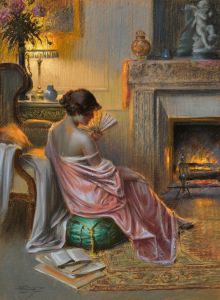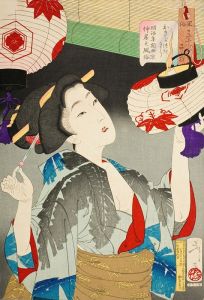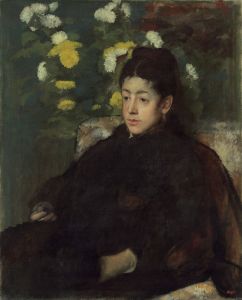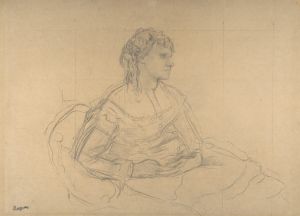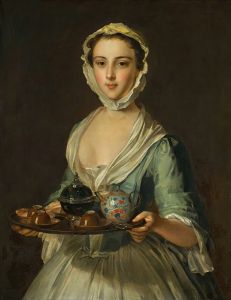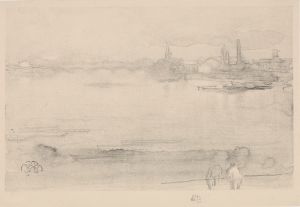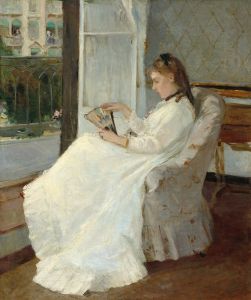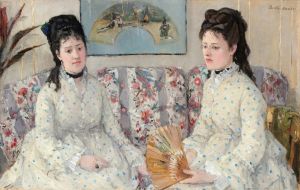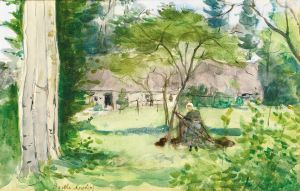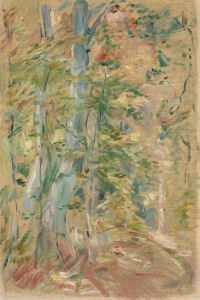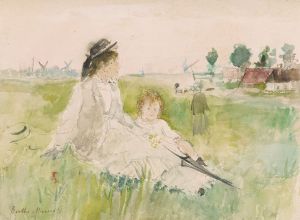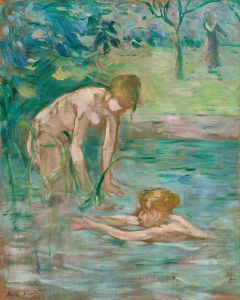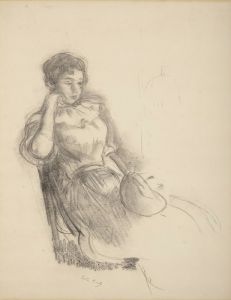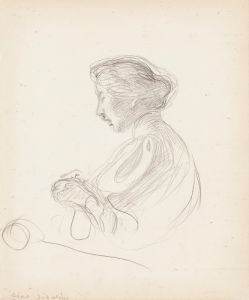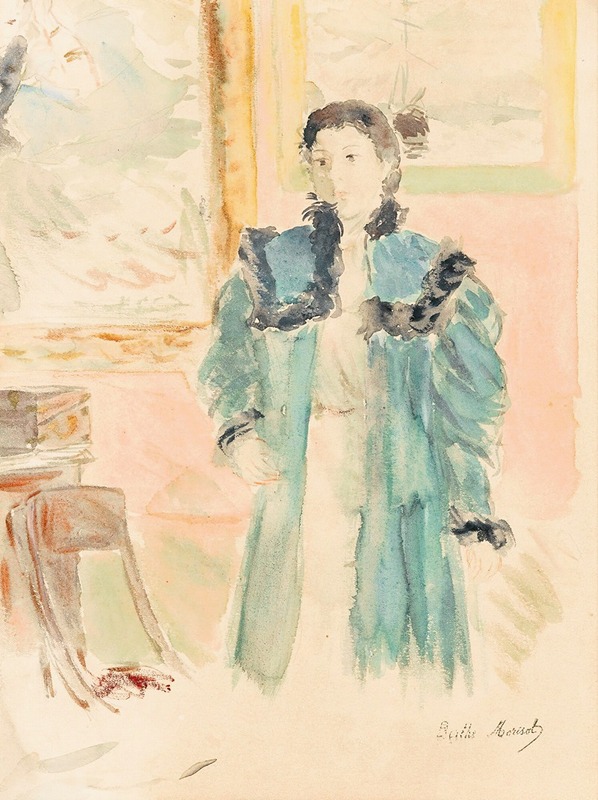
Jeune Fille Au Manteau Vert
A hand-painted replica of Berthe Morisot’s masterpiece Jeune Fille Au Manteau Vert, meticulously crafted by professional artists to capture the true essence of the original. Each piece is created with museum-quality canvas and rare mineral pigments, carefully painted by experienced artists with delicate brushstrokes and rich, layered colors to perfectly recreate the texture of the original artwork. Unlike machine-printed reproductions, this hand-painted version brings the painting to life, infused with the artist’s emotions and skill in every stroke. Whether for personal collection or home decoration, it instantly elevates the artistic atmosphere of any space.
"Jeune Fille Au Manteau Vert" (Young Girl in a Green Coat) is a painting by the French Impressionist artist Berthe Morisot. Created in 1894, this work exemplifies Morisot's skill in capturing the subtleties of light and color, as well as her focus on the intimate and domestic aspects of life, which were central themes in her oeuvre.
Berthe Morisot (1841-1895) was a prominent member of the Impressionist movement, which emerged in France in the late 19th century. She was one of the few female artists associated with this group and was known for her delicate and nuanced portrayals of women, children, and domestic scenes. Morisot's work often featured her family members and close friends as subjects, and she was particularly adept at depicting the private, everyday moments of their lives.
"Jeune Fille Au Manteau Vert" is a portrait of a young girl wearing a green coat, rendered with Morisot's characteristic loose brushwork and vibrant color palette. The painting captures the girl's contemplative expression and the soft, diffused light that bathes the scene, creating a sense of intimacy and immediacy. The green coat, a striking element in the composition, draws the viewer's attention and contrasts with the more subdued background, highlighting Morisot's ability to use color to convey mood and atmosphere.
Morisot's technique in this painting reflects the influence of her Impressionist peers, such as Édouard Manet, Claude Monet, and Pierre-Auguste Renoir, with whom she exhibited regularly. Her approach to painting was marked by a focus on capturing the fleeting effects of light and the ephemeral nature of her subjects. This is evident in "Jeune Fille Au Manteau Vert," where the interplay of light and shadow creates a sense of depth and realism, despite the seemingly spontaneous and loose application of paint.
Throughout her career, Morisot faced significant challenges as a female artist in a male-dominated art world. However, she gained recognition and respect from her contemporaries and was an active participant in the Impressionist exhibitions from 1874 to 1886. Her work was praised for its sensitivity and elegance, and she was regarded as one of the leading figures of the movement.
"Jeune Fille Au Manteau Vert" is a testament to Morisot's artistic vision and her ability to convey the subtleties of human emotion and experience. The painting is held in a private collection, and its exact provenance is not widely documented. However, it remains an important example of Morisot's contribution to the Impressionist movement and her unique perspective as a female artist.
In summary, "Jeune Fille Au Manteau Vert" by Berthe Morisot is a significant work that showcases the artist's mastery of light, color, and composition. It reflects her focus on intimate, everyday moments and her ability to capture the essence of her subjects with sensitivity and nuance. Morisot's legacy as a pioneering female Impressionist continues to be celebrated, and her work remains influential in the history of art.





